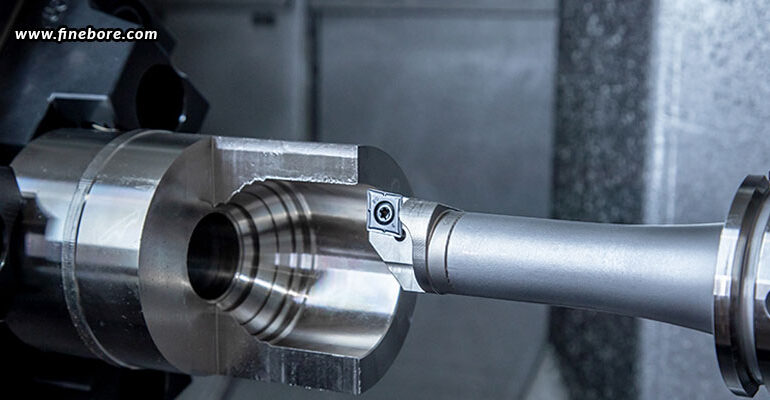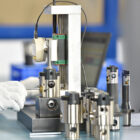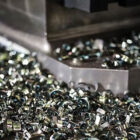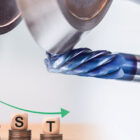Boring bars are essential to obtaining accuracy and precision across a range of sectors. These adaptable cutting tools come in a variety of sizes and forms, each crafted for a unique requirement. However, if you want to maximize the potential of these tools, and guarantee top-notch performance, it’s essential to comprehend the strategies and tactics for using these boring bars efficiently. We’ll delve into the world of boring bars in the blog below, providing insightful analysis and helpful pointers for how to set them up correctly, choose the right cutting parameters, maintain them, and other troubleshooting problems.
Proper tool setup
The correct arrangement of the boring bars is the cornerstone of successful machining. Here are some crucial pointers to make sure your boring bars are set up for success.
- Centering and alignment: The boring bar and workpiece must be precisely aligned, as any misalignment might lead to a subpar surface finish, higher tool wear, or even tool breakage.
- Clamping: Make sure the toolholder has the boring bar clamped in firmly, as proper clamping ensures the reduction of vibrations and movement during cutting, which might otherwise result in dimensional errors.
- Coolant delivery: Effective coolant distribution is essential for heat dissipation and extending tool life. To direct coolant precisely to the cutting edge, you may use coolant nozzles or through-tool coolant systems.
- Toolholder selection: Cutting performance is substantially impacted by the rigidity and stability of the toolholder. Precision toolholders of superior quality are an excellent investment.
Cutting parameters
A careful balancing act must be made between the material, the tool, and the intended results when choosing the cutting parameters. Here are some tips to optimize your cutting parameters.
- Cutting speed: How quickly the boring bar turns during machining is determined by the cutting speed, which is influenced by the workpiece material, tool material, and tool diameter. To determine the optimal cutting speed for your application, use cutting speed charts or machining calculators.
- Feed rate: How quickly the tool enters the workpiece is determined by the feed rate. For effective material removal and long tool life, it is critical to maintain a constant chip load. Based on the tool’s suggested feed per revolution for the particular insert geometry, the feed rate must be adjusted.
- Depth of cut: The depth of cut controls how far into the workpiece the boring bar will penetrate. Start out with careful depths, then gradually increase them, while keeping an eye on the tool’s performance. Too much depth can cause chatter and tool deflection.
- Tool overhang: Reduce tool overhang wherever you can because it impacts the stiffness of the tool. Vibration and tool deflection are risks that are increased by longer overhangs. If required, use toolholders with a long reach to maintain stability.
- Material selection: Different cutting settings are needed for various materials. In general, slower cutting speeds and shallower cuts are required for harder materials. For advice on specific materials, consult machining manuals.
Upkeep and troubleshooting
For tools to last longer and deliver consistent results, routine maintenance and effective troubleshooting are necessary. Here are some excellent suggestions.
- Examine for wear: Check the boring bar and inserts frequently for wear indicators like chipping or worn flanks. As soon as wear is noticed, replace the inserts to preserve the surface finish and dimensional accuracy.
- Reduce chatter: Chatter is a typical problem in boring operations. Take into account the following to cut down or get rid of chatter – using thicker bars or shorter toolholders to increase tool rigidity, optimizing cutting parameters to prevent overloading of the tool, using dampening systems or anti-vibration toolholders, and making sure the boring bar is clamped and aligned properly.
- Effective chip evacuation: Avoiding chip recutting and tool damage requires effective chip evacuation. To control chip flow, you may use high-pressure coolant, chip breakers on inserts, or chip deflectors.
- Tool coatings: Choose inserts with the proper coatings for the application at hand. Tool life is increased by improved wear resistance and reduced friction provided by TiN, TiCN, and DLC coatings.
- Tool preservation: You must store boring bars and inserts in a tidy, dry location. To avoid infection and damage, you should use protective cases or containers.
Even though you may buy the best products from genuine and trusted precision boring bars manufacturers in Bangalore, like FineTech Toolings, you can increase the effectiveness and durability of your boring bars by using the aforementioned advice for proper tool setup, optimizing cutting parameters, regular upkeep, and troubleshooting. Mastering the use of boring bars is crucial for precision machining if you’re looking for machining excellence, whether you’re boring large-diameter holes, obtaining outstanding hole accuracy and surface finish, or dealing with particular machining issues.






